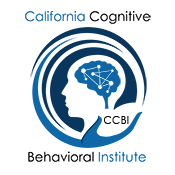It is said that our emotions guide us in facing predicaments and tasks too important to leave to intellect alone – danger, painful loss, persisting toward
a goal despite frustrations, bonding with a mate, building a family. Each emotion offers a distinctive readiness to act, each points us in a direction
that has worked well to handle the recurring challenges of human life (The Emotional Brain).
“All emotions are, in essence, impulses to act, the instant plans for handling life that has been instilled in us. The very root of the word “emotion”
is Motere, the Latin very “to move,” plus the prefix “e” to connote, “move away,” suggesting that a tendency to act is implicit in every emotion. That emotions lead to actions is most obvious in watching animals or children; it is only in “civilized” adults we so often find the great anomaly in the animal kingdom, emotions – root impulses to act – divorced from obvious reactions.” (The Emotional Brain).
Each emotion plays a role in our lives and helps us to “to move” to something or away from something. Emotions also have biological identifiers as
well. For instance with “anger” there is a surge of blood which flows to through our body to our hands, heart, increasing our hormones (adrenaline) and
energy. With fear, the blood goes to the large skeletal muscles, like our legs, making it better for us to flee and away from our face, making us look drained
or “white with fear” and also triggers circuits in the brain’s emotional center that flood hormones that put the body on notice for “fright and flight”
responses.
The mind/body or “head and heart” (emotional and rational) – these two minds operate in tight harmony for the most part in our bodies. They help us balance between emotional and rational thoughts, with emotion feeding into and informing the operational mind, and the rational mind refining and sometimes vetoing the independent faculties, of the emotions. They are meant to work together for maximum effect.
The amygdale acts as the storehouse of emotional memory. More than affection is tied to it – all passion depends on it.
LeDoux stated that life’s earliest years lay down a set of emotional lessons based on the interactions between infant and caretaker, creating
wordless blueprints for emotional life as they grow (Science, How Scary Things Get That Way, 1992).
The emotional brain controls rage and compassion. Neuroscientists use the facts essential for completing a given task or problem, whether it be the
ideal features one seeks in a house while touring several prospects, or the elements of a reason problem on a test. The prefrontal cortex is the brain
region responsible for working memory. But circuits from the limbic brain to the prefrontal lobes mean that the signals of strong emotion – anxiety, anger,
and so on, , can create neural static, sabotaging the ability of the emotional lobe to maintain working memory. That is why when we are emotional upset we can we “just can’t think straight” – and why continual emotional distress can create deficits in a child’s intellectual abilities, crippling their capacity
to learn.
These deficits are not always tapped by IQ testing and can show up through more targeted neuropsychological
measures, as well as in a child’s continual agitation and impulsivity. In one study, primary school boys who had
above average IQ scores were not doing well in school and found via neuropsychological testing to have impaired frontal cortex functioning. (Journal
of Abnormal Psychology, 1999). They were impulsive and anxious¸ often disruptive and in trouble – suggesting faulty prefrontal control over their
limbic urges. Despite their intellectual potential, these are the children at highest risk for problems like academic failure, alcoholism, and criminology –
not because their intellect is deficient, but because their control over emotional life is impaired. The emotional brain controls rage and compassion
and our emotional circuits are sculpted by experience through childhood – and the parents love and compassion for their children helps determine that experience.
CAN EMOTIONS BE INTELLIGENT?
Salovey, with his colleague John Mayer, offers an elaborated definition of emotional intelligence, expanding
into five main domains:
Knowing one’s emotions: Self awareness –
recognizing a feeling as it happens – is the keystone of emotional
intelligence.
-
Managing emotions: Handling feelings so they are
appropriate in an ability that builds on self-awareness. -
Motivating oneself: Marshalling emotions in the
service of a goal is essential for paying attention, for self motivation and
mastery, and for creativity. Emotional self control – delaying gratification
and stifling impulsiveness – underlies accomplishment of every sort and our
performance. -
Recognizing emotion in others: Empathy, another
ability that builds on emotional self-awareness, is the fundamental “people
skill.” People who are empathetic are more attuned to the subtle social signals
that indicate what others need or want.
Handling Relationships: The art of relationships is, in large part, skill in managing emotions in others. Social competency and
incompetency are specifically involved. These are abilities that undergird popularity, leadership, and interpersonal effectiveness.
To know more about emotions, emotional addiction and how it has an impact on relationships and healing, go to www.drkathiemathis.com and look for the next training or ask Dr. Kathie Mathis to speak on this topic at your next event.

